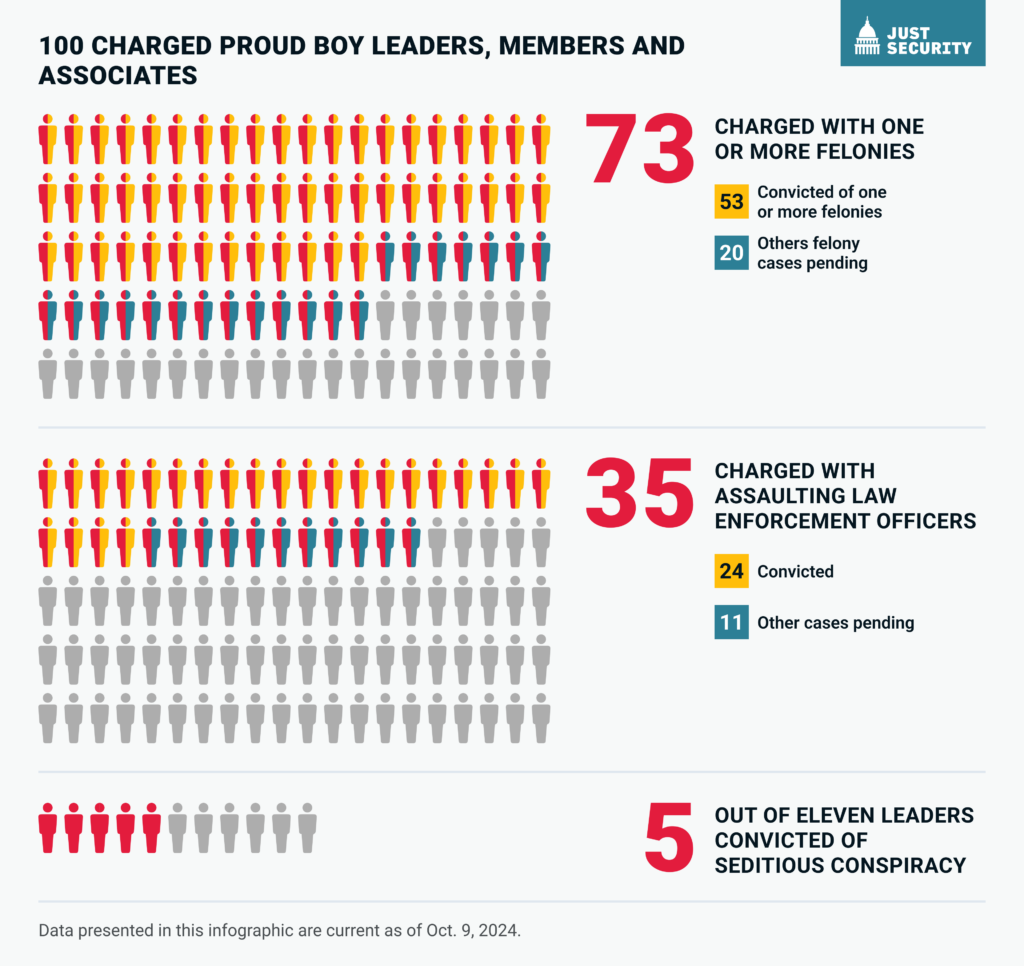Section I summarizes the evidence showing that the Proud Boys specifically planned to “storm the Capitol” on January 6th. Even though the group’s leaders and members tried to cover their tracks after the attack, they left a trail of incriminating evidence. Therefore, the summary in these first three sections is based largely on the Proud Boys’ own words, including signed admissions of guilt.
Section II includes an analysis of the charges against 100 Proud Boy members, leaders, and their associates. This analysis shows that more than 70 percent of these January 6th defendants have been charged with one or more felonies, and more than half of them have already been convicted.
Section III presents a map of the hometowns for each of these 100 January 6th defendants. The map is not just for show – it underscores a key analytic point: The Proud Boys relied on personnel from around the country on January 6th. These defendants included not only members of the group, but also the leadership of various Proud Boy chapters. This analysis demonstrates the Proud Boys utilized a national network, with a hierarchical chain-of-command, to execute the attack on the Capitol.
Finally, this analysis is not just backward looking. Section IV briefly assesses the future of the Proud Boys. Despite the post-January 6th arrests and convictions, the group has survived — and evolved. Though it is widely assumed that the Proud Boys lack a coherent national leadership today, law enforcement agencies should not underestimate the group’s capabilities. It is possible that new leaders have already emerged to succeed their imprisoned comrades. It is also possible that the Proud Boys’ January 6th leadership will receive a presidential pardon, allowing them to return to the fold as heroes. In that event, they would inherit a national network of Proud Boy chapters – not all that dissimilar from the organization that existed on January 6, 2021.
Archived at https://ghostarchive.org/archive/BXrUR


